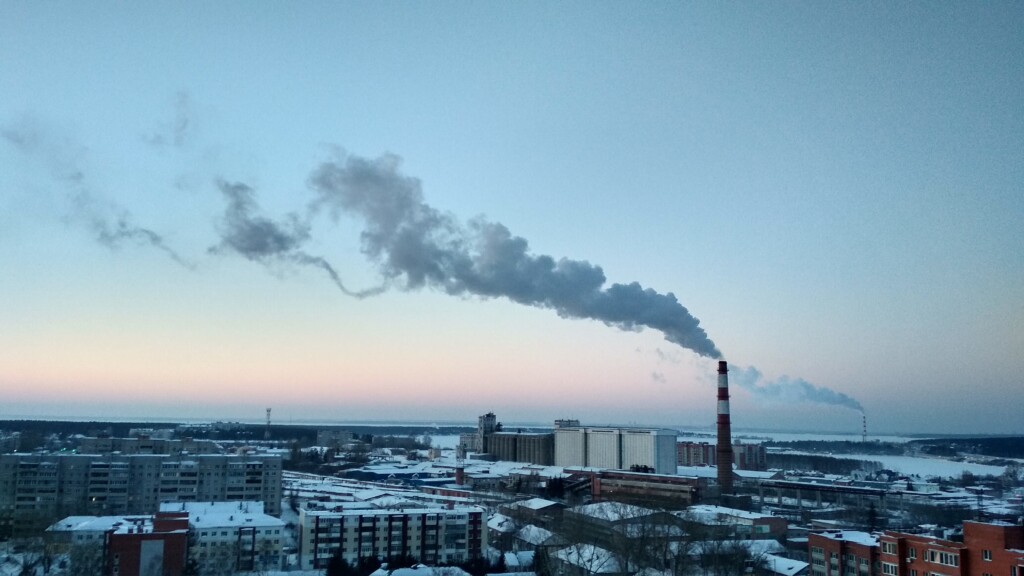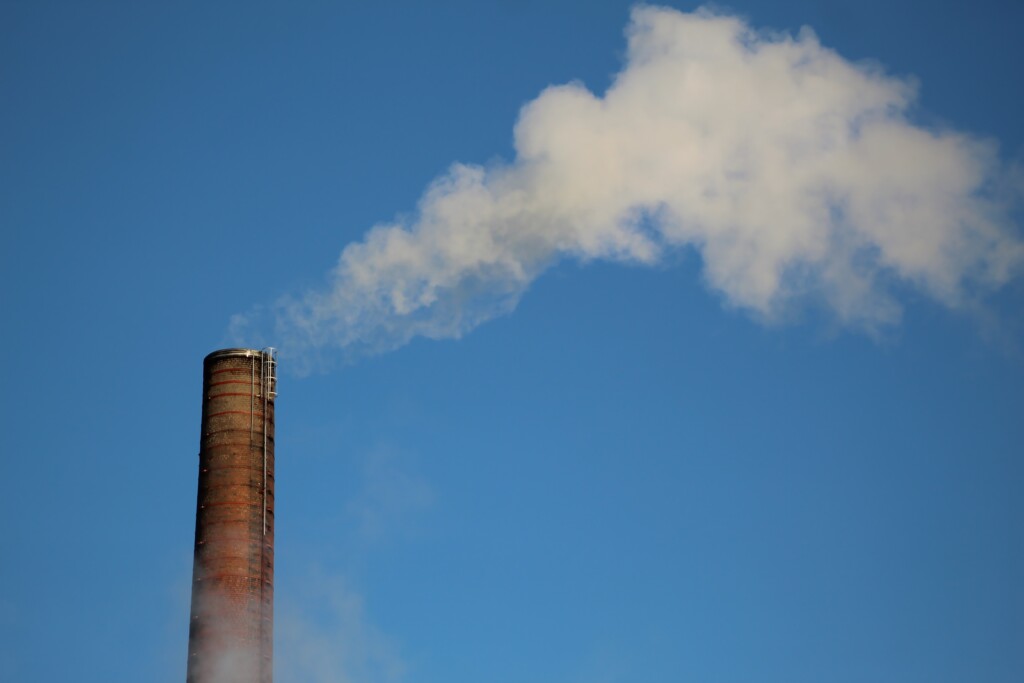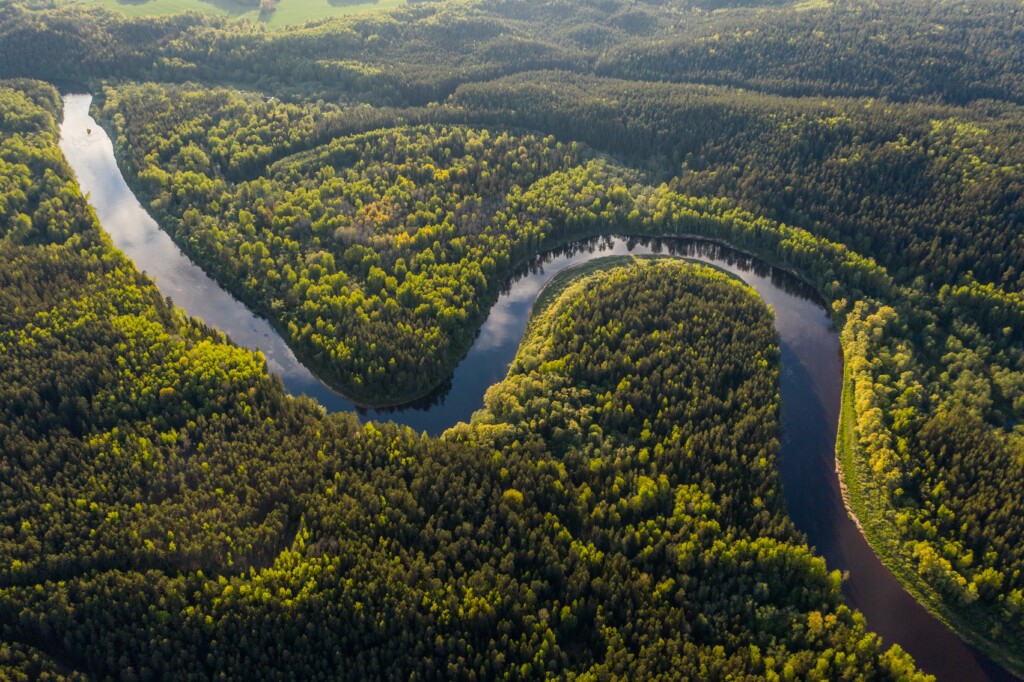The present era is defined by an ecological concern of growing significance – the increasing concentration of greenhouse gases in our atmosphere. How, you might ask, does this invisible menace underpin our planet’s fate? Given that our daily life’s activities produce vast amounts of these gases, it’s crucial that we examine the theory behind and consequences of such emissions rigorously.
Greenhouse gases, namely carbon dioxide, methane, nitrous oxide, and fluorinated gases, have a profound effect on the Earth’s climate. The re-emission of absorbed solar radiation by these gases results in a greenhouse effect, warming the planet and triggering a range of climate-related issues. The stakes, it seems, are higher than ever – but do we grasp the far-reaching impact of these gases truly?
Given the significance of these gases, let us delve into the following 12 crucial facts about greenhouse gas emissions, each elucidating the current state, the impending challenges, and the potential remedial measures in our fight against climate change.

The year 2023 saw a significant threshold surpassed, it registered the atmospheric concentration of carbon dioxide (CO2) at 424 parts per million (ppm). Can you grasp the gravity of this data point? It’s instrumental for us all to understand this figure not as a mere statistic, but rather as an alarm bell for the accelerating rate of human-induced climate change.
When we discuss variants like ppm, it may seem abstract, but what it equates to is a rapid escalation of greenhouse gases, particularly CO2, into Earth’s atmosphere. Have we considered the implications? To provide perspective, the pre-industrial age levels, before the large scale burning of fossil fuels began, lingered around 280 ppm. It emphasises the magnitude of change that a mere two centuries of industrialisation has imposed on our climate system.
It’s common knowledge that CO2 is one of the most pervasive greenhouse gases we humans consistently eject into the atmosphere. What role does it play? If we simplify the science, CO2 traps solar heat within the Earth’s atmosphere, acting like a blanket wrapping around the planet. As CO2 levels rise, so too does the Earth’s average temperature, leading to a phenomenon we comprehend as global warming, the consequences of which are bleak, to say the least.
In the face of such intimidating realities, it becomes imperative to devise solutions to curb the bleeding. By adopting a more sustainable lifestyle, supporting renewable energy sources and advocating for policies that limit carbon emissions, we can collectively endeavour to mitigate this climate crisis. It’s not an overstatement to say: the survival of our species depends on it.

Another stark reality we face is the significant contribution of livestock to global greenhouse gas emissions. Astonishingly, the methane they emit equates to the annual emissions produced by as many as 650 million cars. As surprising as this fact may be to some, it underscores the need for wider acknowledgement and understanding of non-traditional sources of greenhouse gases.
Methane, CH4, is a potent greenhouse gas, over 25 times more effective at trapping heat in the atmosphere than carbon dioxide on a 100-year timescale. Though livestock aren’t the sole producers of methane, their burgeoning population—thanks to increasing global demand for meat and dairy—has made them formidable contributors to its atmospheric levels. To grasp the true gravity of this, picture, if you will, the emissions from an average car. Now, multiply this by 650 million. That’s the yearly methane contribution from our farm animals in the USA.
What is the environmental impact, you ask? Methane’s heat-trapping capability exacerbates global warming, with consequences including rising global temperatures, melting ice caps, and exacerbated weather events. Furthermore, when methane breaks down in the atmosphere, it forms ground-level ozone— a harmful air pollutant. Thus, livestock’s influence extends beyond merely contributing to climate change; it also has significant implications for air quality and public health.
Addressing this source of emissions presents unique challenges. Are we willing to curtail meat and dairy consumption globally? Are advancements in animal feed that reduce methane production viable on a large scale? These are questions we must answer, for each tonne of methane we prevent now, could be invaluable in our battle against climate change.

Analyzing the contribution of China to global greenhouse emissions, the influence of its rapid industrialisation cannot be overemphasised. This East Asian nation, known for its robust growth and increasing global presence, contributes a significant 27% to worldwide emissions – a figure which places it in the unenviable position of being the world’s largest emitter of greenhouse gases.
Essentially, the backbone of China’s massive industrialisation has been its reliance on energy-intensive and carbon-emitting industries. The country is, in fact, the world’s largest consumer of coal, a fossil fuel that is considerably more carbon-intensive than others like natural gas. It’s no surprise then that China’s greenhouse gas emissions have increased in direct correlation with its mounting industrial activities. Additionally, factors like urban sprawl—whereby cities expand and consume significant quantities of energy—and an increase in consumerism have amplified China’s carbon footprint.
But where does this leave us and why is it significant? To put it into perspective, the quantity of greenhouse gases that China emits has direct, tangible impacts on the global climate. From rising sea levels to extreme temperatures, the world is uneasily bearing the brunt of these increased emissions. The urgency of this matter cannot be overstated as emissions keep spiralling upward, intensifying the effects of climate change across the globe. You might ponder, does this mean all hope is lost?
Surely not. On the brighter side, China’s commitment to transitioning to a low-carbon economy is worth noting. Despite the challenge posed by its industrial sector, China continues to make substantial investments in renewable energy and clean technologies. Moreover, the country’s promise to peak carbon dioxide emissions by 2030 and achieve carbon neutrality by 2060 also underlines its determination to combat climate change.
In conclusion, while China’s industrialisation has a profound role in its high greenhouse gas emissions, the country also has the potential to lead in mitigating the impact of these emissions. As we tread this precarious path, we must remember that the fight against climate change is a collective one, necessitating concerted efforts from every nation, including China.

No longer is the industrial sector topping the charts when it comes to being the primary source of carbon dioxide emissions in the United States. Astonishingly, the transportation sector now holds this unenviable title. Rapid urbanisation and a surge in distances travelled by individuals have been instrumental in this shift. Our dependence on private cars, which are predominantly fuelled by petrol and diesel, is a significant part of the problem. Despite the prominence given to more sustainable modes of transport such as electric vehicles and public transit, it seems that the American love affair with the private vehicle endures.
But can we lay all the blame solely at the feet of car usage? There’s more to this story than first meets the eye. It’s worth noting that the rise in air travel, both domestic and international, has made a substantial contribution to the increase in emissions. Despite being a smaller percentage of overall transportation emissions, the impact of a single flight, especially long-haul, can be massive.
Moreover, the increase in emissions from the shipping industry, driven by the globalisation of trade, cannot be overlooked. Each year, thousands of ships traverse the oceans, burning massive amounts of heavy fuel oil and releasing substantial amounts of carbon dioxide into the atmosphere.
What now, you may wonder? While the challenge is significant, hope is not all lost. Through innovation, policy interventions, and changes in individual behaviour, we can begin to reverse this trend. Let us not forget, the choices we make today will determine the world we live in tomorrow. Time is of the essence, and the need to act is now.

Could you imagine a scenario where the lung of Earth paradoxically becomes one of its main polluters? Sad to say, this is no longer a hypothetical question. Recent data reveals that the Amazon, Key to regulating the world’s climate by absorbing carbon dioxide, now emits this greenhouse gas at a drastically higher rate. Instead of functioning as a net carbon sink, this vital ecosystem is teetering on the verge of becoming a carbon source, intensifying the effects of climate change.
Why such a transformation, you may ask? This significant shift is primarily driven by rampant deforestation and climate changes’ vicious cycle. For years, large areas of the Amazon have been deforested for agriculture, timber and mineral resources, which not only rids the planet of a critical carbon sink, but also reveals vast carbon stocks stored in vegetation to the atmosphere. This process results in increasing the total volume of CO2 in the environment.
One should also not overlook the fact that climate change itself is exacerbating this situation. Rising global temperatures and fluctuations in the rainfall pattern often lead to droughts – conditions under which the Amazon struggles to act as a proficient carbon sink. An overstressed Amazon results in decreased carbon absorption and increased CO2 release due to increased tree mortality and decomposition rates.
It is imperative for us to understand this disturbing trend; the Amazon, once a reliable ally in offsetting our carbon footprints, could effectively turn into a liability if we continue with business as usual. Addressing this issue requires global effort and urgent action towards halting deforestation and emitting less greenhouse gases. It’s this or facing an Amazon that causes further global warming; a distressing prospect indeed.

Melting permafrost indeed poses an alarming prospect when it comes to greenhouse gas emissions. You may ask, why does it matter? Let me elaborate. Permafrost, permanently frozen soil in polar regions, contains vast amounts of organic material which, when melted, decomposes and releases carbon dioxide and methane, two potent greenhouse gases. Could you imagine the impact of a sudden outpouring of these gases? To give you a sense of scale, we’re talking about an estimated 160 billion tonnes of carbon dioxide, equivalent to almost 15 years of US emissions at current rates.
Aside from the direct emissions, there’s a worrying knock-on effect to consider. Melting permafrost creates a feedback loop where higher temperatures cause permafrost to thaw at a progressively faster rate, releasing more gases, thereby causing temperatures to rise even further. Consider it as a kind of domino effect – one that could dramatically accelerate climate change. This phenomenon, known as ‘permafrost carbon feedback,’ is factored into some climate models, but little do we know that current models might be underestimating its effect.
Another worrisome offshoot of the melting permafrost is the degradation of infrastructure in Arctic regions. Buildings, roads, and other structures – they’re all at risk. As permafrost thaws, the ground becomes less stable, resulting in sinking and collapsing infrastructure. This vastly escalates the challenges for communities living in these areas and necessitates major investments for repair and adaptation.
We can’t pretend melting permafrost is an issue that can be swept under the carpet. Rather, it exemplifies how the impacts of climate change can reverberate through numerous systems in unexpected and potentially catastrophic ways. Hence, mitigating greenhouse gas emissions now is more of an insurance against such unforeseeable risks lurking in the future.

As we cast our eyes towards the modern horizon, it’s impossible to ignore the increasingly relevant role of cryptocurrencies like Bitcoin. However, alongside the promise of a decentralised financial future, the rapid expansion of this digital currency powered by blockchain technology has precipitated a surprising and concerning by-product: a significant environmental impact. When we ponder upon the magnitude of this issue, perhaps the most alarming fact is that Bitcoin mining consumes more energy annually than some countries, an energy consumption linked directly to the increase in greenhouse gas emissions.
According to a report from the Cambridge Centre for Alternative Finance, the Bitcoin network consumes an estimated 121.36 terawatt-hours (TWh) per year, placing its energy usage above that of countries like Argentina and the Netherlands.
The cornerstone of this environmental toll lies in the ‘proof-of-work’ model utilised by many cryptocurrencies, including Bitcoin. This model requires miners – those who validate transactions and create new blocks on the chain – to solve complex mathematical problems, a process that demands substantial computational power and, thus, electricity. Consequently, as cryptocurrencies like Bitcoin continue to proliferate, the energy demand of coin mining has conspicuously increased, driving up electricity use and leading to greater carbon emissions. But why does all this matter to you and the wider society?
Meanwhile, as we wrestle with this predicament, potential solutions are emerging. Some experts highlight the possibility of transitioning into a ‘proof-of-stake’ model, used by cryptocurrencies such as Ethereum, which significantly reduces energy demands. Other suggestions include the utilisation of renewable energy sources for mining operations or implementing ‘carbon taxes’ for cryptocurrency mining networks.
As it stands, the challenge we face is both immediate and serious; the environmental implications of cryptocurrency mining can no longer be ignored. Just as we scrutinise other areas of our lives for their contribution towards greenhouse gas emissions, the same critical lens must be applied to the world of cryptocurrency. Our future wellbeing depends on how quickly, and how robustly, we can respond.

The environmental impact of aviation and car use appears comparable on the surface, but a closer look exposes the dramatic difference. A single trans-Atlantic flight is estimated to generate roughly the same amount of carbon dioxide as driving a car for an entire year. However, the scale of the flying’s impact vastly outweighs that of car use: a journey by plane is typically much shorter, yet it leaves a heftier carbon footprint. How can this be?
The answer lies in the shear volume of greenhouse gases, primarily carbon dioxide, released per kilometer travelled. An aircraft burning jet fuel sends these emissions directly into the upper atmosphere, where they have an up to three times more potent impact than surface emissions. Besides, air travel’s infrastructure and maintenance further inflate its carbon footprint.
While the scale of individual car emissions is lower, the sheer number of cars on the road cannot be overlooked. Consistent emissions from widespread car usage build over time, contributing significantly to the overall carbon footprint. Therefore, driving less and seeking alternative, less carbon-intensive modes of transport, like cycling or public transport, do make a difference.
Ultimately, both contribute to the global issue of greenhouse gas emissions, each demanding our urgent attention. Some solutions are within our reach, such as investing in electric vehicles, improving fuel efficiency, and supporting research and development of sustainable aviation fuels. Understanding the true impact of our everyday decisions is a significant step towards creating a more sustainable future.

Unbeknown to many, the global food waste phenomenon, if regarded as an emitting entity, slides neatly into the ranking of largest greenhouse gas contributors, presently challenging the spot for third place. This perturbing fact validates the pressing role our collective consumption habits play in the grand scheme of our climate crisis. Are you aware of the proportion to which your uneaten food contributes to escalating carbon footprints?
The United Nations Environment Programme (UNEP) affirms, in the event of global food waste being treated as a country, it would land behind China and the United States only, as the third most significant contributor of greenhouse gases to our environment. (Source: UNEP)
Mouldering food in landfills generates methane, a greenhouse gas far more potent than carbon dioxide at trapping heat, thereby accelerating the global warming process. Each time we discard edible food, we are essentially squandering the energy, water and natural resources invested in its production, not to mention the emissions associated with that process.
In a time where climate change is heavily under scrutiny and every excess of carbon emissions counts, the natural recourses we consume to grow food intended for consumption, and ultimately waste, is a glaring area of folly we must address. If we as consumers, producers, and policymakers can rectify our wasteful nature, we have the potential to make a serious impact on reducing global emissions. But, is the question for us not, how do we tackle this problem?

Have we ever truly considered the more inconspicuous contributors to climate change? Think, for instance, of nitrous oxide. Tucked away at number 10 in our list, this potent greenhouse gas can often be brushed aside in carbon-centric conversations. Yet we must not underestimate its weight in the scale of global warming.
It is a staggering fact, one which might throttle our complacency, that nitrous oxide has 300 times the warming potential of carbon dioxide over a century. With the manure from the agriculture sector being the leading nitrous oxide emission source globally, the urgency to rectify, to direct solid action towards this particular sector, becomes all the more apparent.
The complexity of tackling nitrous oxide emissions lies within the very nature of the agriculture sector and consequently, the solutions demand a systemic approach. We need innovative technologies to monitor and prevent these emissions and enhanced management strategies that promote sustainable farming practices. The effective implementation of these strategies can significantly reduce the environmental impact of agriculture, specifically regarding nitrous oxide emissions.
A handful of nitrous oxide may seem negligible in the vast expanse of the atmosphere, but it packs far more heat-trapping potential than we might imagine. Its underestimated impact on our climate implores us to stop overlooking the ‘small’ factors in our fight against global warming. With strategic interventions in the agricultural sector, we can win this battle against this less talked about, but potent greenhouse gas: nitrous oxide.

Urban green spaces, comprising of parks, forests, green roofs, street trees, and gardens, take on a pivotal role in combating the prevailing climate emergency. These green enclaves not only enhance the aesthetic appeal of urban landscapes but also become instrumental in absorbing as much as 7% of a city’s emissions. Curious, aren’t you, about how these patches of green work to mitigate climate change effects? Let us delve further to understand this vital aspect.
To put it simply, green spaces serve as natural carbon sinks, absorbing carbon dioxide during photosynthesis, a crucial process that also produces essential oxygen. Thus, increasing green infrastructure can effectively lower the atmospheric carbon dioxide concentration, one of the key greenhouse gases responsible for global warming.
Moreover, we can’t discuss urban green spaces without highlighting their role in controlling heat islands — urban spaces that are significantly warmer than surrounding rural areas due to human activities and sprawling concrete structures. By providing shade and releasing moisture into the air, vegetation helps regulate the local climate, reducing the intensity of urban heat islands and hence, the need for energy-consuming air conditioning systems.
Another aspect yet to be fully appreciated is that these spaces can reduce energy consumption by acting as natural insulators for buildings. Using green roofs or walls goes a long way in cooling down buildings, consequently reducing the reliance on electricity-powered cooling systems.
Isn’t it fascinating how urban green infrastructure becomes a way for cities to contribute actively to climate change mitigation? We often think of climate solutions on a grand scale, failing to recognise the cumulative impact of smaller actions at local levels. Here, every city has the potential to make a substantive impact on climate change mitigation efforts, and the greenification of urban spaces forms a substantial part of this process.

Delving into the impact of individual dietary choices on greenhouse gas emissions provides a startling insight into the potential of personal actions in the battle against climate change. Our everyday choices, notably what we put on our plates, have a significant bearing on the environment.
The production, processing, and distribution of food are all energy-intensive processes that result in the emission of greenhouse gases. Different foods, however, have different greenhouse gas footprints.
National Centre for Biotechnology Information
Let’s look at some key findings related to the influence of dietary choices on the environment:
Understanding the connection between our dietary choices and greenhouse gas emissions enables us to make conscious decisions that contribute to climate change mitigation. It’s evident that individual actions multiplied across our communities can lead to substantial change.

The urgency of the situation cannot be overstated. By examining these facts, it’s clear that we stand at a critical juncture. Addressing the myriad challenges wrought by mounting greenhouse gas emissions requires harnessing the collective resolve of societies globally. Both in the multitude of our actions and in their magnitude, there lies the profound potential to effect tangible change.
The vital first step in this undertaking lies in education and awareness. After all, how can we expect to solve a problem if we lack a comprehensive understanding of its scale and complexity? In disseminating key information, fostering an understanding of the issue, we pave the way for informed decision-making. From the individual dietary choice to corporate carbon neutrality commitments, effective climate action hinges on this bedrock of knowledge.
Yet, we must remember, awareness alone won’t get us far. It must catalyse action. Only when we translate this knowledge into calculated, persistent effort will we score victories against climate change. Be it through low-carbon technologies, promoting eco-conscious behaviours, or policy changes, the opportunity remains with us to redirect our course towards a sustainable future. We should ask ourselves – Are we prepared to make these necessary shifts? Can we make the leap from passive observers to active participants in this crucial fight against climate change?
As we reflect on these daunting statistics, let them not render us passive, but rather, galvanise us into action. Armed with awareness, and a resolute commitment to change, we each carry the capacity to shape our planet’s future. Remember, no action is too small, nor any effort insignificant in this collective endeavour to stem the vicious tide of greenhouse gas emissions.
Stay a while and read more posts like this
Let’s devote a few minutes to envision our world in 2100. It’s quite a thought experiment, given the dramatic transformations our planet has experienced in...
With climate change looming large, the world is embarking on a quest for solutions to heal our ailing planet. Solar geoengineering emerges as a burgeoning field,...
Taking on parenthood comes with unique choices that factor in more than just our family’s immediate needs. For modern parents, who are not just guardians of...